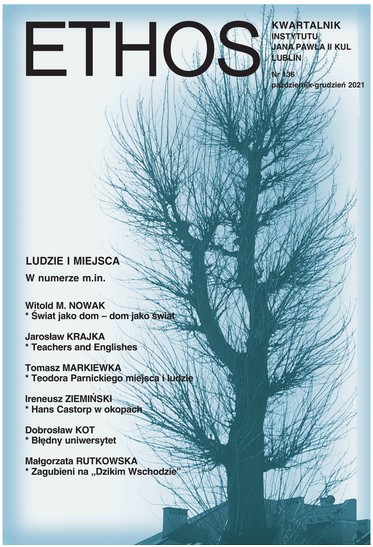Jan Trepczyk i idea odrodzenia kaszubszczyzny
Jan Trepczyk and the Idea of the Rebirth of the Kashubian Culture
Author(s): Adela Kuik-KalinowskaSubject(s): Cultural history, Customs / Folklore, Polish Literature, Theory of Literature, Identity of Collectives
Published by: Katolicki Uniwersytet Lubelski Jana Pawła II - Instytut Jana Pawła II, Wydział Filozofii
Keywords: Jan Trepczyk; Kashubian literature; Kashubian folk tradition; Kashubian language; Kashubian identity;
Summary/Abstract: Jan Trepczyk, along with Aleksander Labuda and Jan Rompski, was a leading representative of a Kashubian literary group, known as zrzeszyncy, who set themselves the goal to bring about the rebirth of the Kashubian culture. The aim of the present paper is to describe the activities and, above all, the literary and musical output of Trepczyk who, having inherited the principles of Kashubian regionalism from Florian Ceynowa, Aleksander Majkowski, and Jan Karnowski, implemented both the ideas of his predecessors and his own vision of the Kashubian culture. The author analyzes and interprets the ideological presuppositions underpinning Méster Jan’s works which addressed a variety of subject areas: history, tradition, culture, and the natural environment of the Kashubian region, as well as the Kashubian language. The poet emphasized the great value and importance of the Kashubian language whose continued existence he perceived as a guarantee for the development of Kashubian culture, spirituality and tradition. Trepczyk’s output comprises, among other things, lyric poems varying in form, literary genre, and means of poetic expression. His poetry refers to the tradition of Kashubian music, while being deeply rooted in the folklore and ritual culture of the Kashubians. In his works, the poet creates a myth of Kashubia as a ‘little homeland’ united with the ‘great homeland,’ i.e., Poland, and by drawing on the history of Pomerania and Kashubia, demonstrates the close connection of the culture of that region to the ancient Slavic culture. To illustrate the idea of protecting the Kashubian heritage, Trepczyk uses both simple means of expression and solemn and sublime language, giving the readers strength and providing inspiration for action.
Journal: Ethos. Kwartalnik Instytutu Jana Pawła II KUL
- Issue Year: 34/2021
- Issue No: 4
- Page Range: 366-393
- Page Count: 28
- Language: Polish
- Content File-PDF

